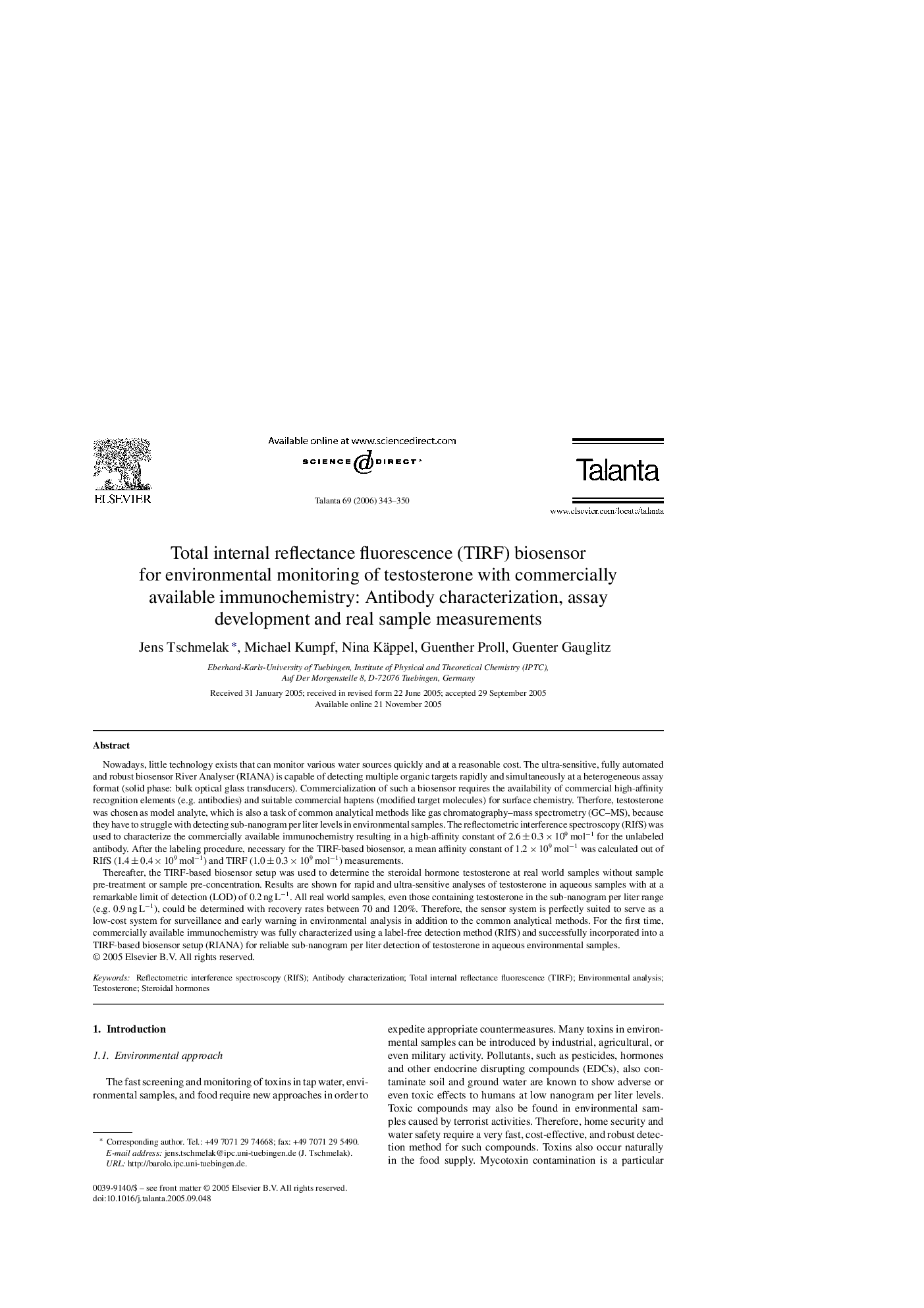| Article ID | Journal | Published Year | Pages | File Type |
|---|---|---|---|---|
| 1247324 | Talanta | 2006 | 8 Pages |
Nowadays, little technology exists that can monitor various water sources quickly and at a reasonable cost. The ultra-sensitive, fully automated and robust biosensor River Analyser (RIANA) is capable of detecting multiple organic targets rapidly and simultaneously at a heterogeneous assay format (solid phase: bulk optical glass transducers). Commercialization of such a biosensor requires the availability of commercial high-affinity recognition elements (e.g. antibodies) and suitable commercial haptens (modified target molecules) for surface chemistry. Therfore, testosterone was chosen as model analyte, which is also a task of common analytical methods like gas chromatography–mass spectrometry (GC–MS), because they have to struggle with detecting sub-nanogram per liter levels in environmental samples. The reflectometric interference spectroscopy (RIfS) was used to characterize the commercially available immunochemistry resulting in a high-affinity constant of 2.6 ± 0.3 × 109 mol−1 for the unlabeled antibody. After the labeling procedure, necessary for the TIRF-based biosensor, a mean affinity constant of 1.2 × 109 mol−1 was calculated out of RIfS (1.4 ± 0.4 × 109 mol−1) and TIRF (1.0 ± 0.3 × 109 mol−1) measurements.Thereafter, the TIRF-based biosensor setup was used to determine the steroidal hormone testosterone at real world samples without sample pre-treatment or sample pre-concentration. Results are shown for rapid and ultra-sensitive analyses of testosterone in aqueous samples with at a remarkable limit of detection (LOD) of 0.2 ng L−1. All real world samples, even those containing testosterone in the sub-nanogram per liter range (e.g. 0.9 ng L−1), could be determined with recovery rates between 70 and 120%. Therefore, the sensor system is perfectly suited to serve as a low-cost system for surveillance and early warning in environmental analysis in addition to the common analytical methods. For the first time, commercially available immunochemistry was fully characterized using a label-free detection method (RIfS) and successfully incorporated into a TIRF-based biosensor setup (RIANA) for reliable sub-nanogram per liter detection of testosterone in aqueous environmental samples.
